Calathea is one of the most well-known species of Marantaceae native to the Brazilian rainforest. It is loved by plant lovers and grown indoors due to its striking leaf patterns. Moreover, displayed as an ornamental plant on balconies, offices, and even homes. The upper portion of the leaf resembles masterful painting strokes, with different shades of green, yellow, and white. The underside leaves are predominantly low or bright burgundy. The intricately designed leaves are nicknamed due to their resemblances to various animals, such as rattlesnake, peacock, and zebra plants.
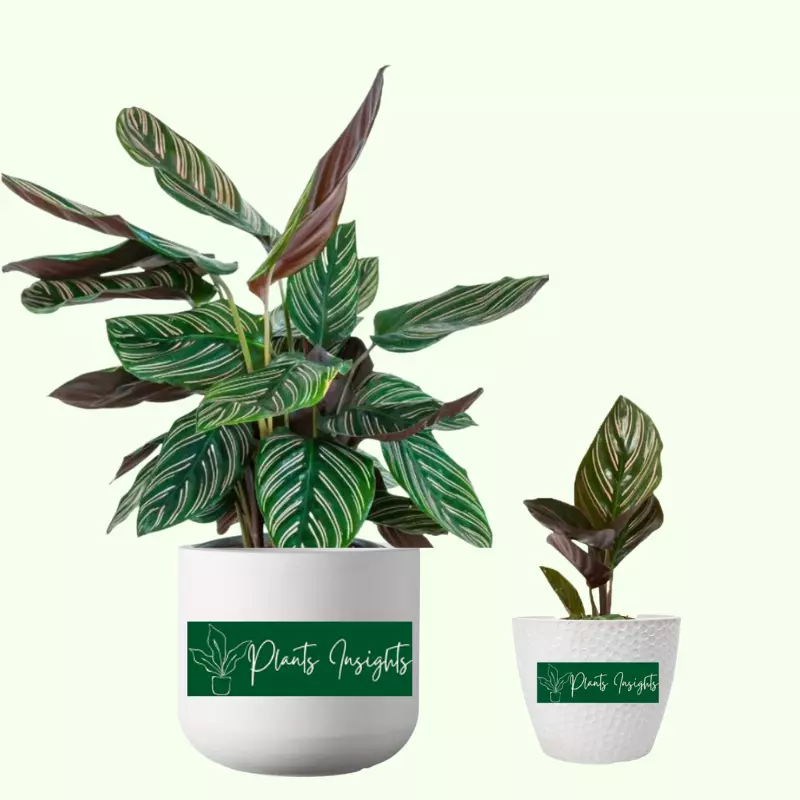
Additionally, it’s the goal of plant lovers to grow the number of their favorite plants by propagation. The best feature about Calathes is that they are easily propagated from the mother plant. What number of baby plants could be created out of the mother plant? It depends on the size of the parent plant.
Prominent Family Members: Calathea White Star, Calathea Leopardina, Calathea Fasciata, Calathea Roseopicta, Calathea Flamestar, Calathea Lutea, Calathea Freddie
Essential Products:
When to propagate Calathea plants?
The best time to propagate your Calathea plant is before the start of spring or when you decide to re-plant it in a slightly bigger pot. The roots of a repotting plant are already exposed to the air. Therefore, it is advisable to propagate it through the division of the roots and repot the parent plant. Moreover, it is possible to cultivate Calathea plants by seeds, though it might take longer to grow, and the success rate is meager.

How To Propagate Calathea Plants?
The most efficient method of propagating the Calathea is through root division during repotting in the spring season. Calatheas have extremely fragile roots, so carefully pull out the plant from the pot without damaging the mother plant roots.
Carefully divide the plant roots from where the stem has made its natural divisions in the roots. Plant the baby saplings in moist soil and place them in a dark area until growth starts, usually between two and four weeks. The Calathea needs to be repotted every couple of years with a fresh mix of potting soil and can be divided every time.
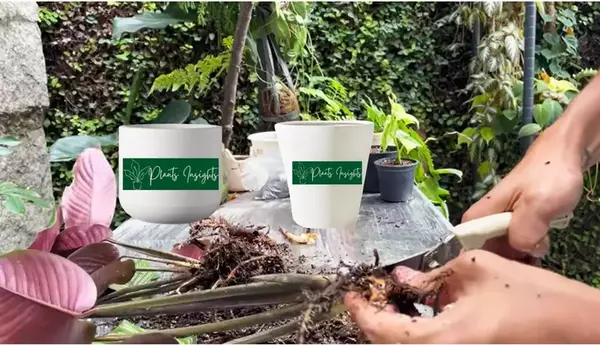
Propagation of calathea

How Big Should the Plant Be?
Calathea is a moderately fast-growing plant and requires repotting every two years; however, while repotting, if you see the natural separation of root cluster from mother roots, these clusters indicate that it’s time to propagate the plant through its roots.
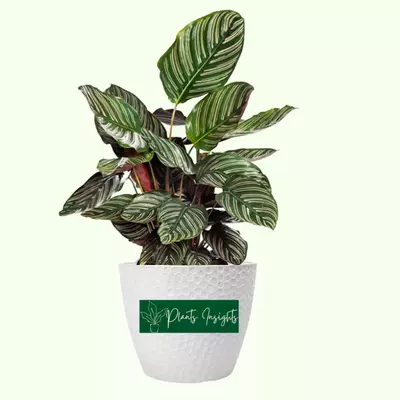
Propagate fully mature plant

Why Propagate a Calathea Plant?
The propagation process involves increasing the number of plants belonging to a specific plant species or cultivar. Propagation provides you with a new same plant of a species and increases the number of indoor plants of your favorite beauty.
By dividing your plant, it’s easy to maintain the size of the plant. However, Calathea is a moderately fast-growing plant, and after two years, they require repotting; the best time to reshape the size of your plant is by dividing it into baby plants.
This article will provide complete information on how you can quickly propagate your Calathea with two methods without damaging the mother plant.

Propagation of Calathea through root division
It is recommended to propagate Calathea in early summer as Calathea is in a growing phase. Naturally, it will start its average growth and easily overcome the root division stress. Follow these steps to propagate your Calathea.

Propagation through root division
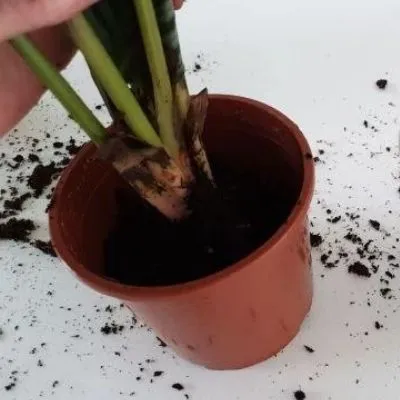
Plant baby saplings in a moist soil

Are any Calathea varieties easier to propagate?
There are more than three hundred verities of Calathea, and many of them are highly particular about the climatic conditions they require to thrive. Fortunately, the procedure for propagating Calatheas is straightforward, but you must be cautious not to hurt the roots or plant when breeding.
Providing required conditions for growth afterward the propagation is an essential part of the successful propagation.
Calathea Rufibarba (Velvet Calathea) and Calathea Lancifolia (Rattlesnake Plant) are probably the easiest Calatheas to propagate. Calatheas with bigger, thin, and delicate leaves, such as Calathea Makoyana, Calathea Orbifolia, and Calathea Warscewiczii, are more challenging to reproduce than the other varieties of Calathea.

Does your Calathea have to be healthy to propagate successfully?
It is essential to propagate a healthy planet for the healthy sapling. We recommend keenly checking the mother plant roots for root rot or any other disease. A sick plant will produce a diseased sapling, and it will not grow normally and will die soon.
Please cut away all the infected and brown roots from the root ball before propagation; afterward, select a healthy root bunch for propagation.
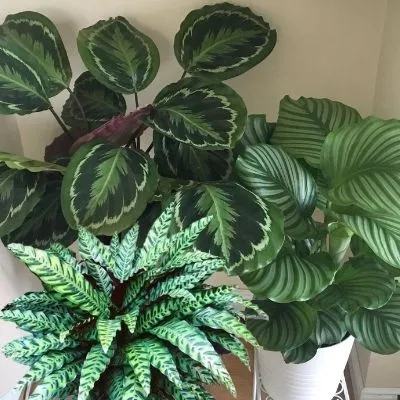
Healthy plant produces healty baby plant

Will Propagated Calathea Plants Be Identical to The Mother Plant?
The propagated plants are divisions of the parent plant, so they are identical to the mother plant. But if you do not place the offspring plants in the required atmosphere for optimal growth, they could look different. One example, if the plant is exposed to intense light or a less humid environment, its foliage color will fade, and leaves tips and edges will start crisping.
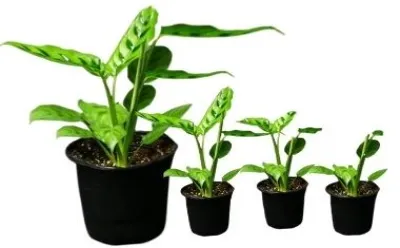
Baby plant identical to the parent plant

How Many Divisions Can Be Done from One Plant?
Usually, a Calathea mother plant is divided in half to propagate. Though a large-sized mother plant can be divided into more than two, it depends on the naturally separated root clusters from the main plant.
Be careful; if the mother plant loses too much of its root ball, it cannot survive as it will lack the necessary requirements to thrive after propagation.

Divide the mother plant into two parts
Make a dilute solution and water your plant before applying fertilizer. Please avoid overfertilization.

How to care for Calatheas after propagation?
After propagation, baby plants require much care and a favorable environment for fast growth. Calatheas are famous as fussy indoor tropical plants; however, they will flourish amazingly if you provide them with the proper care.
Furthermore, soil plays a vital role in baby plant growth, so choose the soil with well-draining and moisture retention quality. We highly recommend using potting soil that contains perlite, coco coir, and peat moss. Commercially readymade soil is also available for specific plants growth, but it will be best if you add more perlite to enhance the draining capability of the soil.
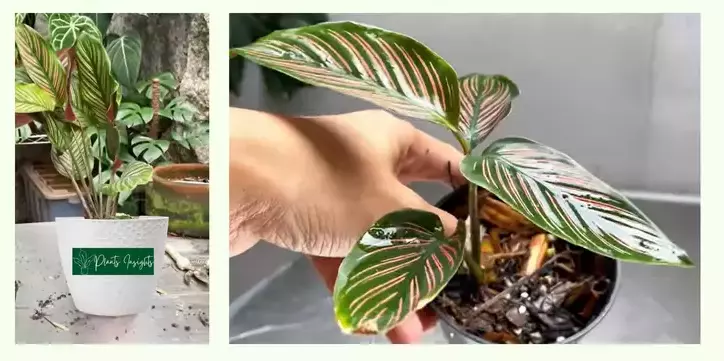
The plant requires special care after propagation
Furthermore, keep the sapling in a warm place with a temperature up to 65°F with high humidity around it.
Please don’t keep it directly exposed to sunlight and select a shaded area with bright diffused light.
When it’s come to watering, water it when potting soil is dry up to two inches, use a moisture meter, or use your finger to feel the dryness of the soil. Avoid overwatering; it’s harmful to plant growth by making soil soggy.
Calatheas are sensitive to the chemicals present in tap water. Water your Calathea with rainwater, distilled or filtered water.
Calathea Propagation Problems
Here are a few problems which you might face after the propagation.
How long do the divisions take to establish?
It takes two to four weeks to adjust to a new environment. The baby plant takes this time to recover from the shock of being separated from the mother plant’s root system. Once new growth starts, shift the baby plant to the normal setting.
How long for the divisions to grow to the size of the original plant?
Calathea is a moderately fast-growing plant, but still, it takes a year to reach up to the mother plant’s size.
Common Calathea Propagation Problems
After propagation, if Calathea leaves start turning brown, it shows that it is placed in a less humid atmosphere. Increase the humidity level by misting or gathering the all-indoor plant in one pot.
Invest in a plant humidifier to maintain at least 70% humidity around the plant to keep your tropical Calathea plant healthy.
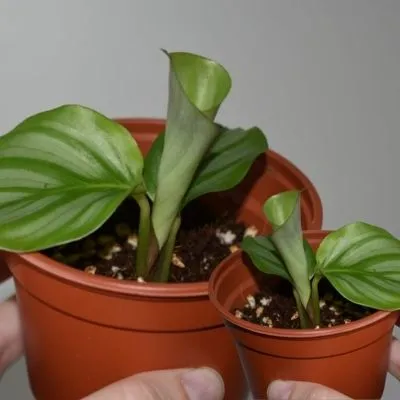
Baby Calathea
If the propagated Calathea closes its leaves in the daytime, it indicates the soil has been dry for a long time, and the plant is saving its water by closing its leaves to reduce the transpiration. Water your plant deeply and rewater again when pot soil is dry up to two inches deep.
Baby Calathea takes at least three to four weeks to start new growth, but if it does not show new growth after four weeks, there could be multiple reasons.
It might be overwatering, or the baby plant is not getting the required temperature or humidity. Place a clear plastic bag and keep it in a humid and warm place under a shaded area.
Furthermore, if the baby plant starts wilting or drooping, it is a sign of dry soil; water the plant immediately.
Moreover, if the baby plant leaves edges and tips become brown, increase the humidity level around the plant by placing it on a pebble-filled water tray. Make sure that base of the pot is not in the water.
Calathea is native to the Brazilian rainforest and loves to thrive in the exact atmosphere that mimics the jungle. A baby plant also requires moist soil and a warm, humid, and shaded area to grow as a mother plant.

Can you propagate Calathea plants from seed?
Calathea can be propagated through seeds, but it’s a complicated process and requires much care. Unfortunately, propagation through seeds has a less successful rate for seed germination.
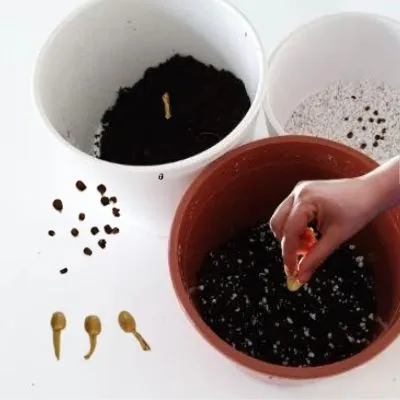
Place the seed in moist soil
Purchase healthy, disease-free Calathea seeds from a reliable supplier and follow these steps to propagate your Calathea plant through seed.
FAQ
Can you propagate Calathea plants from cuttings?
No, Calathea cannot be propagated through stem or leaf cutting because stem or leaf cuttings don’t have specific tissues that grow into the roots and develop as a separate plant.
Can you propagate Calathea in water?
Once you have separated healthy roots with stem and leaves from the mother plant, you can opt for growing the baby plant in soil or water. However, for Calatheas prosperous propagation soil is a more popular growth medium and yields better results.
